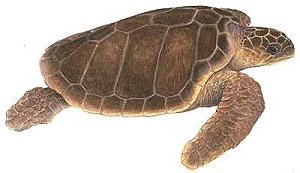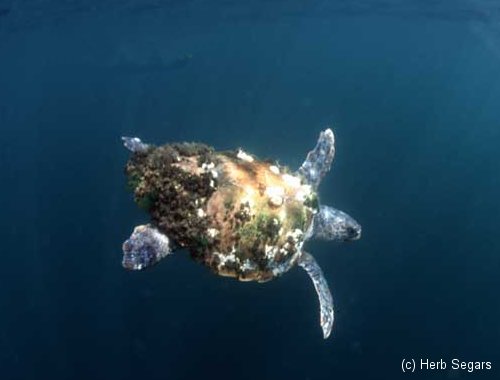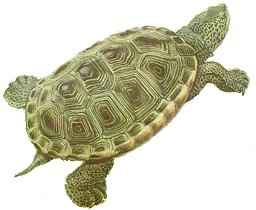Loggerhead Sea Turtle

Caretta caretta
Size: to 40" ( shell ) and 300 lbs.
Habitat: oceanic
Notes: Loggerhead turtles feed primarily upon bottom-dwelling invertebrates. Compared to Greens, Loggerheads have proportionately larger heads and jaws. They are the most common sea turtles in our waters and the only type that is not endangered.

The most abundant of all the marine turtles, these handsome creatures reach 4- 5 feet in length and weigh up to 400 - 500 pounds. Loggerheads are reddish-brown on the back and orange-yellow underneath. They often acquire barnacles and seaweed growing on their shells.
These turtles once nested throughout the tropics and as far north as Maryland in the US. Although they are still quite numerous, their nesting range has diminished as man has invaded coastal areas for housing and recreation. Several large nesting beaches in Florida and the Carolinas can still be found, and attempts by local residents to patrol beaches to protect nesting females and hatchlings are paying off.
Juvenile loggerheads regularly inhabit Long Island Sound and the eastern bays where they feed mainly on crustaceans and shellfish. Some adults can be found along the ocean shore and in New York Harbor. As with all sea turtles, loggerheads are long-lived. A mature female loggerhead was documented to live 33 years in captivity, while estimates of their life expectancy range up to 60 - 75 years or more.



